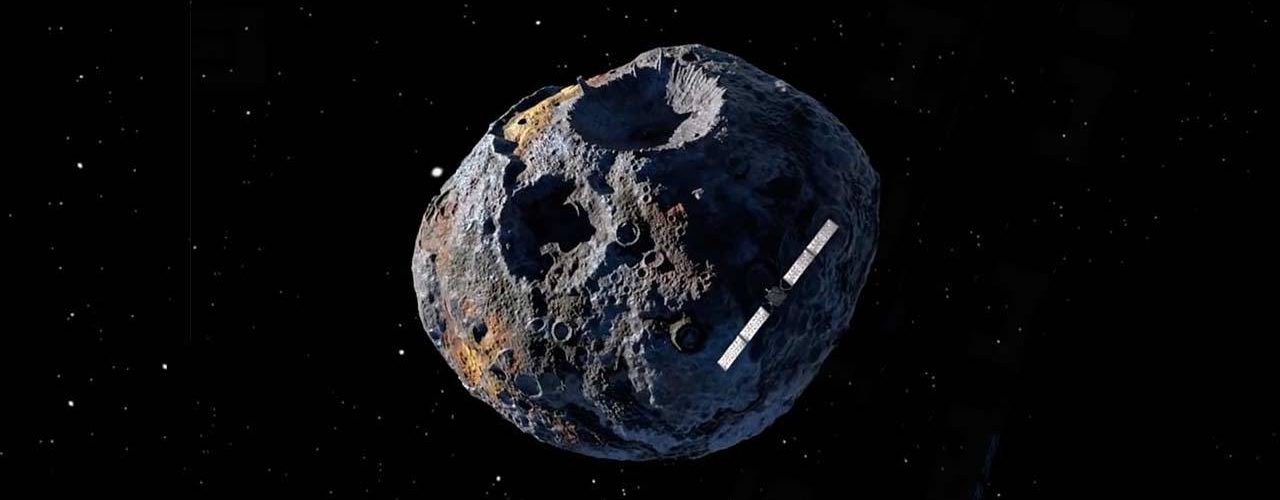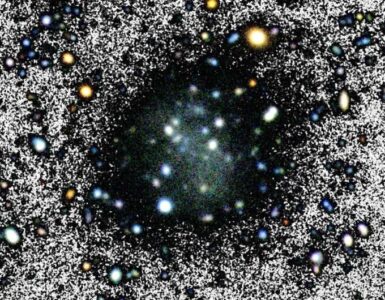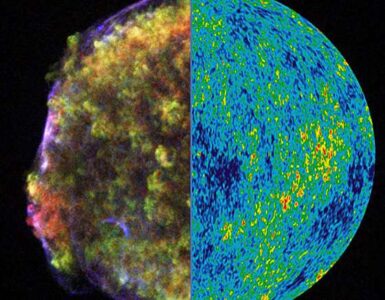by A’liya Spinner
4 Vesta
It’s the alarm that wakes Matthew from his allotted four hours of slow-wave sleep, a tinny, drawn-out sound that reverberates through his bunk and rattles the implant in his left eye. Once, that sound had grated on his every nerve, wrenching him out of sorely-needed sleep. Now, he does not complain. He, along with the other three men he shares this shuttered closet with, unstrap from their rigid bunks and dress with practiced, weightless ease into their clunky mining suits. Even in the oxygen-rich sleeping pod, Matthew feels suffocated, and he’s not the only one. Tao, the Asiatic astrominer who sleeps beneath Matthew, begins to cough and gasp as he strains for breath. Rumor has it that their recent illnesses are caused from asteroid dust— brought into the station from poorly-decontaminated work suits— accumulating in their lungs, but the Company has yet to release an official statement or make any noticeable changes to procedure. Matthew suspects they don’t plan to, either; the ICMM health inspector isn’t due for a visit for another five years due to shuttling costs from Earth.
Just as Tao’s coughing abates, the implants in their eyes flicker to life, directing them out of the habitat pod and towards airlock 2C, where the roster has placed them for the day. Flashing arrows overlay his vision, leading the way through the cluttered corridors of the mining station. Even though he doesn’t need the guidance, Matthew endures the blinking shapes and the English script that flutters wherever his eye wanders, scrolling through the latest Company updates, alerts, and reminders. He wants to take it out, but his shift manager has told him many times that the Company insists they stay in at all times, “in the case of an emergency”. Really, he knows it’s so they can monitor his movements and whereabouts at all times. It’s illegal technology on Earth, but there are no regulations on 4 Vesta.
Matthew glances out a viewport, at the surface of the asteroid. The mining station stretches on for a mile of interconnected tubes, pods, and heavy equipment, hauled here piece by piece to 4 Vesta by the joint private operations of American, Chinese, and UAE companies. Slow-moving cargo bins— pulled along by thick cables that keep them anchored to the surface of the asteroid, supplementing 4 Vesta’s nugatory gravity— crawl along its dusty surface, loaded with platinum, rhodium, and nickel from the mines where Matthew and his bunk mates must soon venture. Once, he imagines that the view from 4 Vesta’s surface must’ve been spectacular; now, however, it’s simply cluttered by the sprawling station and tall scaffolding from which supply ships come and go. Some of the digging machines spew debris and dust into the thin atmosphere of the asteroid; such destructive machinery has been outlawed on Earth just as the eye implants were, but no one cares what happens to the once-pristine surface of 4 Vesta, even at the cost of the lungs and the lives of their minimum wage miners. As Tao (still punctuating every few meters of movement with a coughing spell) leads the small contingent through airlock 2C, Matthew remembers his former Union job on Earth, working in a refinery, with wistful fondness. That was before the asteroid mines started refining and manufacturing on-site, destabilizing millions of jobs around the planet. That was before a lot of things.
The mine where he’s been assigned for the day is cramped and dark, and it takes many minutes of hauling his nearly-weightless body end over end down a tether to descend the shaft. His stomach twists painfully, but the auto-updates flashing across his vision tell him that rations won’t be doled out for another few hours; the Company had recently cut back on how often they feed workers, citing supply shortages and the increased cost of transporting all of the bare necessities their miners needed from Earth to the asteroid belt. When some threatened to quit, the Company happily offered them seats on the next departing shuttle— for a price, of course; space travel wasn’t cheap. No one followed through.
Deep in the dark, hollow heart of 4 Vesta, Matthew labors, his body aching from two years of muscle atrophy in the nearly-weightless environment. Human hands and brains are cheaper to employ than complex robots, and the work is hard, endless, and dangerous. But it’s necessary. The asteroid mines helped save Earth from ecological collapse— even if the multi-trillion dollar Company now controls global politics with its almost infinite wealth. And the money he earns goes straight to his daughter’s college fund— a worthy cause, even though he hasn’t seen her in over twenty-eight months, and maybe never will again. Through it all— the aching, the coughing, and the darkness— Matthew clings to hope. Because hope is all he’s allowed to have on 4 Vesta.
Astromining
4 Vesta is a work of science-fiction, but the future it depicts is not completely unbelievable. The notion of asteroid mining has been circulating more than ever as private companies seek ways to tap into the seemingly limitless resources of space for profit, expansion, and innovation, and they’re getting closer every year. United States senator Ted Cruz once said “the first trillionaire will be made in space”, and while the US Space Act of 2015 prohibits anyone from legally owning asteroids, private companies are entitled to materials they mine from bodies in space. 4 Vesta— a real rock in the asteroid belt— may see miners in our lifetime.
The Appeals
It’s not a secret that Earth’s natural resources may soon be exhausted. Herein lies one of asteroid mining’s primary appeals: asteroids are thought to contain not just nickel, iron, and other common metals, but gold, platinum, rhodium, and many scarce resources no longer bountiful on our homeworld. Not only are these materials financially exciting (the estimated worth of the heavy metals in the asteroid 16 Psyche is $700 quintillion, not accounting for the inflation that irresponsible mining could cause), but could also provide the raw materials to further facilitate modern industry, food production, and, especially, space expansion. Angel Abbud-Madrid, the director of the Center for Space Resources at the Colorado School of Mines, believes that the metals, ice, and rocks mined from asteroids can be used to build settlements or electronic components in situ, cutting down on the costs of shuttling astronauts to and fro, and helping humanity establish their first inhabited compound on the surface of a celestial body other than Earth, while also supporting the continuation of the “Fourth Industrial Revolution”.
Furthermore, there’s a scientific reason to mine asteroids: Jim Bell, a planetary scientist at Arizona State University, believes that metallic asteroids (such as the aforementioned 16 Psyche) may be the remnants of the cores of nascent planetoids, destroyed in collisions during the solar system’s violent early history. Studying the composition of these rocks will give scientists a window into Earth’s core and the core of other celestial bodies, where the heat and pressure is too intense for modern instruments to probe, and provide insight into the origin of our planet. This prospect is so exciting, in fact, that NASA has recently approved the design for an unmanned spacecraft to visit 16 Psyche (estimated arrival date: 2026) to study its surface, composition, and geological history.
But there’s perhaps an even more important reason to look to asteroids for metals and ice, and that’s to protect our homeworld from the abuse of mining. Methods like fracking use ecologically-damaging amounts of water and can leak toxic chemicals into aquifers and nearby land, and have been controversial across the world for their negative environmental impacts. But even the recent efforts to promote clean energy has come with a cost. Cobalt, for instance, is a necessary component in lithium-ion batteries, which power anything from cellphones to electric cars— and as the demand for these things increases, so too does the demand for cobalt. But just because it’s a source of clean energy doesn’t mean cobalt is a perfect or ethical resource. Over 60% of the world’s cobalt comes from Congo— one of the Earth’s poorest nations— where over 100,000 people, including children, work in hand-dug mines with minimal safety precautions. Injuries and deaths are common, and the unregulated mining exposes surrounding communities to toxins that cause respiratory ailments and birth defects. Since 2010, the governments and corporations of the world have become increasingly aware of this exploitation, and are moving— slowly— to correct it. Yet even with global attention and regulation, electric cars still need lithium-ion batteries, which means the mining must continue. But asteroids could solve this crisis by offering a safer and more equitable method of obtaining cobalt and other precious metals, making electric cars and other clean sources of energy cheaper, more accessible, and more ethical for humanity as a whole.
The Barriers
So if asteroid mining has so much potential, why aren’t we doing it already? The unfortunate truth is that mining celestial bodies is not as simple as it may appear on paper. The major issue is funding: space travel is incredibly expensive, and not all private companies or government agencies are willing to risk millions on experimental technology. While the rewards are great— for example, water collected on asteroids can be a potentially powerful fuel source for rockets, and the temptation of riches is certainly enticing— rockets still need to be built, launched, and regularly returned in order to make a profit off of the endeavor. Some companies are hoping to crowdfund the cost, such as Mitch Hunter-Scullion’s Asteroid Mining Corporation, while other private endeavors (SpaceX, Blue Origin) are aiming for less lofty goals— such as permanent settlement on the moon— instead of shooting for the asteroid belt.
The other major roadblock is simply that our technology is not yet advanced enough to make asteroid mining plausible. In order to be possible and cost-effective, considerable amounts of infracture would need to be built in low-Earth and near-Earth orbit where transport vessels could be refueled, off-loaded, and repaired by astronauts and scores of robots. Similar structures would need to be constructed around the proposed asteroids, too, along with on-site refineries to make the process as efficient as it can be. Once this scaffolding is in place, there are a myriad ways that asteroids may then be mined, but just planning something so large and relatively self-isolated presents an engineer’s nightmare of automated robots and complex machinery. To some, it may seem too daunting to even dream of attempting.
But just because the technology isn’t plausible today doesn’t mean that asteroid mining will always be out of reach. In 1980, NASA published a study called “Advanced Automation for Space Missions” that explored a number of hypothetical scenarios and technologies; one such idea was an automated factory on the moon that was able to use “local resources” to self-replicate and expand until it had grown to such a size that it could begin to harvest mineral ores and helium-3. The same theory can be applied to asteroid mining, where self-replicating spacecraft assemble copies of themselves using harvested materials to greatly cut down on the cost to the original companies who released them, while multiplying the eventual return. Fans of science-fiction may recognize this hypothetical as being very similar to the premise of David Brin’s short story “Lungfish”, but the idea’s not just science-fiction anymore. According to a 2016 study that analyzed recent developmental trends in robotics, self-replicating supply chains could be just a few decades away.
So while today we may look at asteroid mining as expensive, dangerous, and implausible, the same may not be true for our children. It’s impossible to predict exactly what breakthroughs may be achieved in the upcoming years of discovery and space expansion, especially with increased interest from international governments and corporations in space travel. Whether we want it or not, asteroid mining is in humanity’s future— so rather than dismiss the notion entirely, we should take this time to consider how it could “go wrong”, and do our best to protect our planet and its people to ensure that space truly is the shared reward of all mankind.
Can We Do Better Than 4 Vesta?
The near-future shown in 4 Vesta— similar to the old, dark days of unregulated coal mining— is improbable, but represents a scenario of irresponsible technological exploitation that is not quite so unbelievable if one looks back to the complicated history of industrial progress around the world. In 4 Vesta, asteroid mining is a minimum wage job with few prospects that puts astrominers at the mercy of the vastly wealthy company that employs them. These miners have no choice but to work at 4 Vesta, and other asteroids like it, because the celestial mining industry has destroyed manufacturing and refinery jobs on the homeworld. Even though the Earth of 4 Vesta’s future has been saved from ecological destruction, it came at the price of human rights and dignity. It’s both horror-dystopian and somehow believable, but it doesn’t have to happen, and probably won’t— if we act responsibly.
Rather than send astronauts on long missions to hazardous asteroids (which may pose temperature and radiation risks that stall colonization), artificial intelligence may pioneer missions to the asteroid belt, monitored and course-corrected safely from Earth, minimizing the risk to human life. And while mining and refinement of metals from space may decrease the demand for certain jobs, it will create many more— after all, someone still needs to design, weld, and maintain the low-Earth orbit infrastructure, spacecraft, and mining equipment. Nor will sourcing minerals from asteroids bring the end of Earth-based mining; Congo can continue to export its cobalt, but no longer will the demand be so high that international companies can afford to turn a blind eye to the abysmal conditions miners are subjected to in poorer nations. And while it’s true that mining will probably make a certain few companies inordinately wealthy, the infrastructure and technology that will eventually result from astromining will benefit science, exploration, and commercial business beyond just the elite few who will fund it at the beginning. Working together, the governments, agencies, and companies of the world— with the help of engineers, activists, and everyday workers and visionaries— can create a global system for the betterment and enrichment of humanity as a whole.
So, can we overcome greed, shortsightedness, and division, and do better for ourselves and our children than 4 Vesta? We’ve done it before, all around the world. And while it may sometimes seem like the odds are stacked against progress, there’s always hope for a better and fairer future, and someday that hope— along with dedication, patience, and ingenuity— may someday take us to the stars.









